Kim Hoang is a folk painting genre which originated from Kim Hoang village, Hoai Duc district, Hanoi in the late 18th century. The paintings reached their prime use in the 19th century and were a popular decorative item during Tet in the capital city.
In the past, Kim Hoang paintings were made between the tenth and twelfth lunar months to cater to the demand for home decoration during Tet.
The folk paintings became very popular in the early 19th century but interest started fading after Kim Hoang village suffered a severe flood in 1915. The flood swept away wood blocks of the paintings, which was the beginning of the end of the folk art. By 1945, no one in Kim Hoang village made paintings.
Kim Hoang paintings and their printing wood blocks were then seen only at Vietnam Arts Museum and some collections of local and foreign painting collectors.
The original folk art has been recently restored thanks to the efforts of lovers of the old paintings one of whom was Nguyen Thi Thu Hoa, director of Hanoi Ceramics Museum.
With a strong desire to revive the folk paintings lost for more than half a century, Hoa worked with artists Nguyen Duc Hoa and Tran Nguyen Dan to restore the wood blocks and samples of Kim Hoang paintings.
“If we do not work to restore this folk art right now, we will surely be unable to do so ten years from now because the materials will no longer be available” Hoa said. She now has a collection of 60 samples of Kim Hoang paintings.
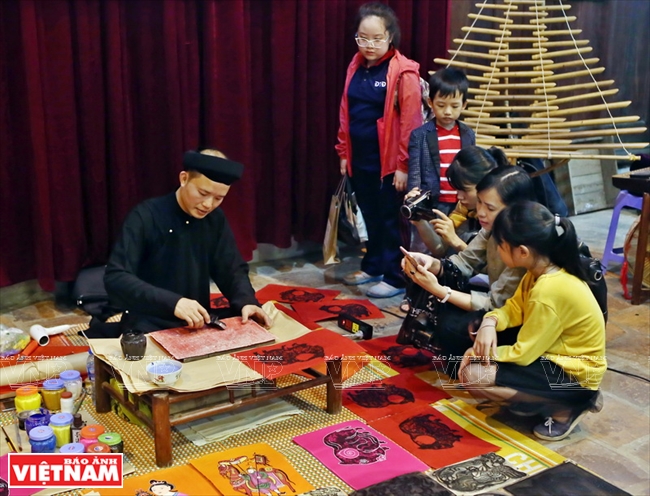
An artisan shows visitors how a Kim Hoang painting is made. Photo: Cong Dat / VNP
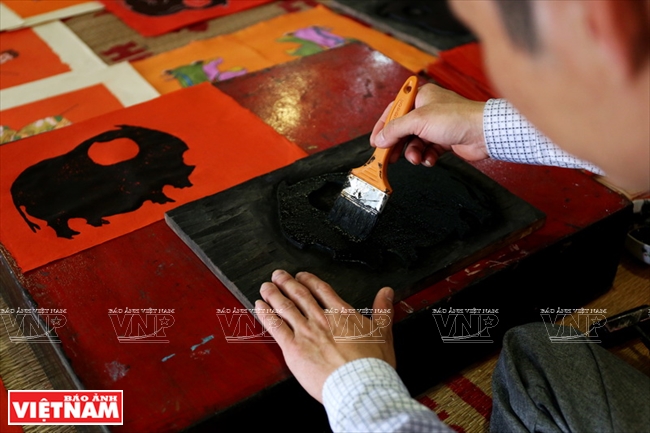
Unlike Dong Ho paintings, Kim Hoang paintings use only one woodblock for printing. Photo: Khanh Long / VNP
|
Dao Dinh Trung, a young artisan in Kim Hoang village, has the same love for Kim Hoang paintings.
Trung has been collecting wood blocks left in Kim Hoang village and studied old books to be able to revive the traditional paintings of his native land.
Trung said although Kim Hoang paintings bear similarities with Dong Ho paintings from Bac Ninh and Hang Trong paintings from Hanoi, the materials used in these paintings are different. Dong Ho paintings are printed on diep paper and Hang Trong paintings use do paper. Kim Hoang are made on red or pink paper, and it is also called red painting.
While each Dong Ho painting has different woodcut blocks each of which is for printing a different color, a Kim Hoang painting has a single wood block for printing black lines on the paper. The artisan then adds colors and drawings to each painting, which shows the talent of the artisan and makes Kim Hoang paintings diverse even though they are printed from the same wood block.
Kim Hoang paintings mainly depict the simple daily life of people in the northern delta with images familiar in northern villages such as buffalos, pigs, chickens and a Tet market.
Beautiful Kim Hoang paintings. Photos: Cong Dat, Khanh Long
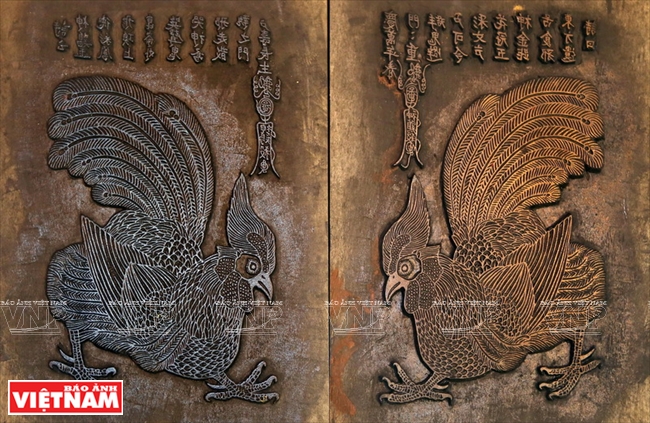
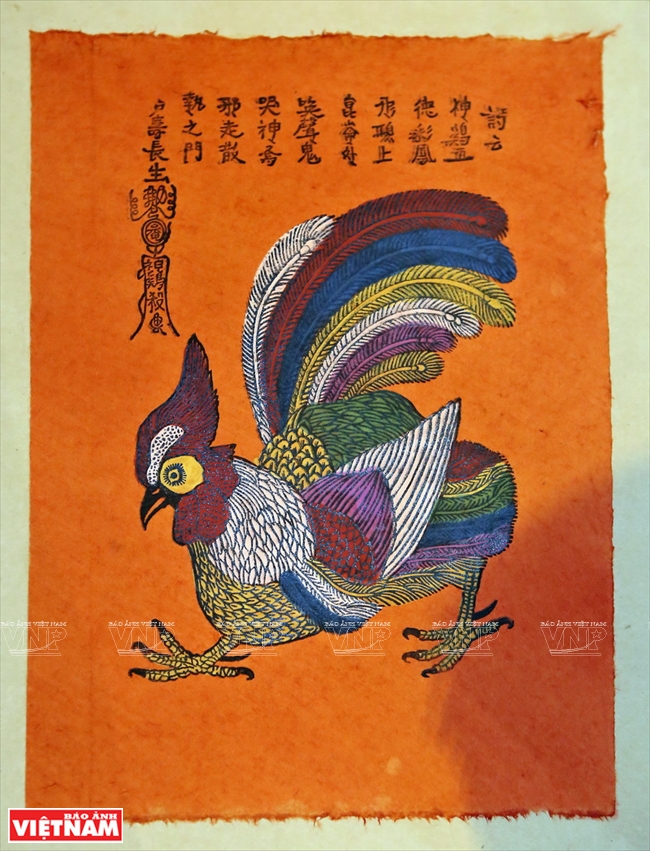
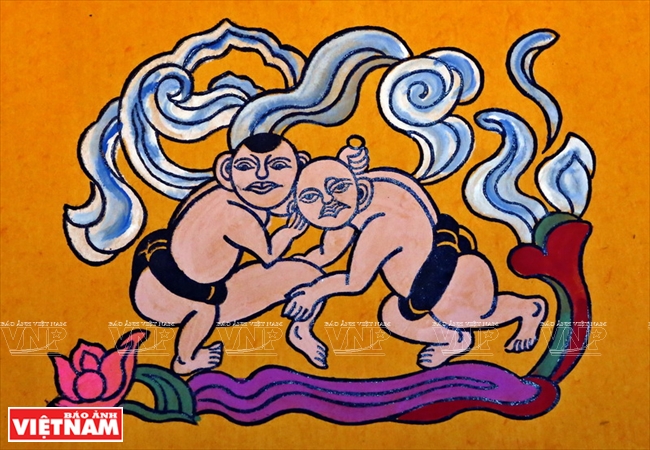
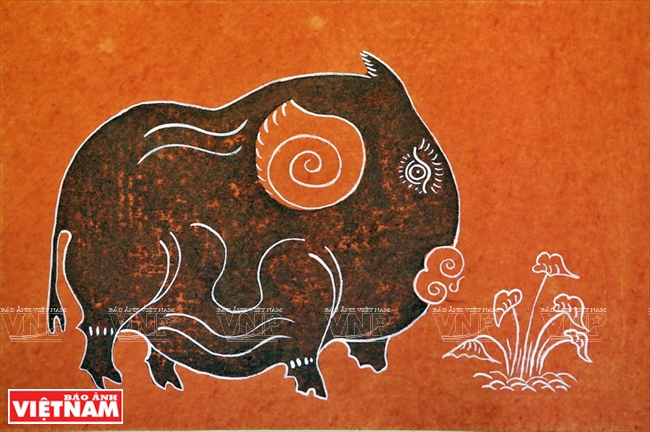
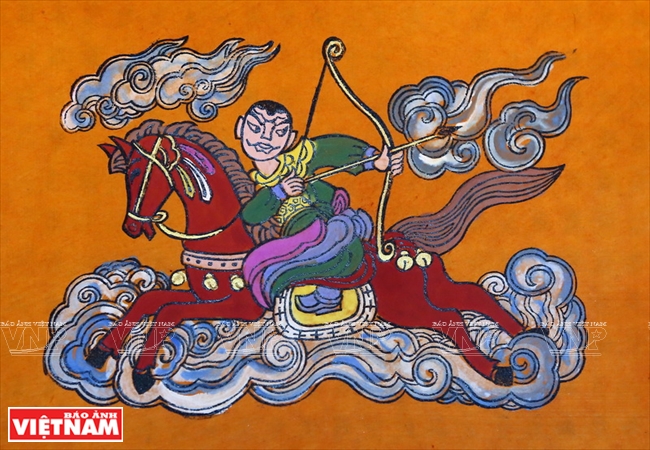
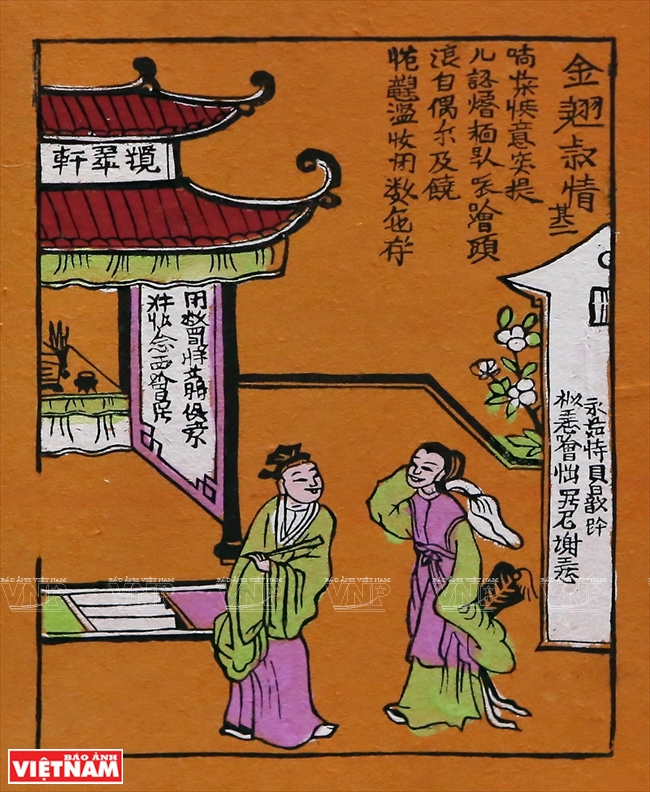
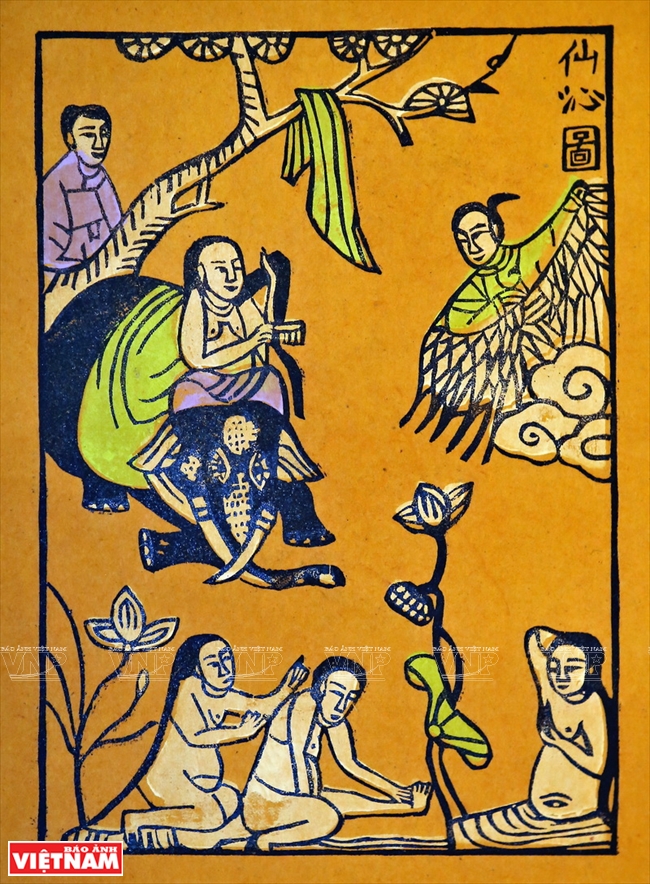 |
The most popular image in Kim Hoang paintings is a pair of roosters which symbolize the power of gods. In the past, people believed that hanging the painting of roosters at home at the beginning of the lunar new year would help drive away evil spirits and thus bring peace to the family.
The pig painting was also a favorite decorative item during Tet because pigs were regarded as a symbol of prosperity and happiness.
Apart from the images, Kim Hoang paintings included poems written in ancient Chinese characters and printed in the upper left corner. Each painting is a perfect harmony between the image and characters. This not only shows the talent of the artisan but also makes Kim Hoang paintings distinctive from others./.
|
An exhibition of Vietnamese folk paintings and application was held at the Temple of Literature in Hanoi in late 2018. The event displayed more than 200 paintings and designs which used the patterns of Kim Hoang paintings. This shows the strong revival of this original folk art in modern times. |
Story: Cong Dat - Photos: Khanh Long, Cong Dat